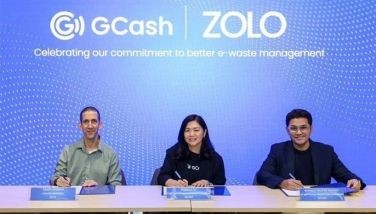Microfinance regulatory scene still fragmented
April 16, 2002 | 12:00am
The regulatory environment for microfinance institutions is still fragmented.
That is because the non-government organizations (NGOs), or the leading entities propagating microfinance is not regulated by government. They are only required to register with the Securities and Exchange Commission (SEC).
Since the 1980s, the NGOs have been in the forefront in developing and extending microcredit to the poorer segment of society after government efforts since the 1970s only resulted in losses to the state. For the credit-hungry segment of society, it only left a bad taste and negative experience as the program became a political tool of the national and local government officials.
Whatever policies initiated by the NGOs are poorly dependent on the conscience and expertise of their board of directors and management whether for the benefit of the borrowing poor or for poor profit.
"Thus, there is a large reliance on self-regulation," said Ricardo P. Lirio in a study entitled Promoting Microfinance Institutions in the Philippines. Lirio is the managing director of the supervision and examination, and officer-in-charge of the department of thrift banks and non-bank financial institutions of the Bangko Sentral ng Pilipinas (BSP).
The BSP official said that although this has resulted in generally positive results from well-meaning NGOs, "these do not even comprise a fifth of the estimated number of the total NGOs involved in microfinance."
BSP board member Antonino L. Alindogan Jr. said that regulations of the NGOs involved in microfinance has been limited. However, he assured that monetary authorities has been working "extra time" to improve the regulatory environment.
Alindogan explained that several measures have already been put in place through administrative orders that regulate microcredit activities. "But we must find the appropriate government body that would directly regulate specifically the microfinancing activities of NGOs."
Among the government formations being looked into for limited regulatory activities for NGOs is the National Anti-Poverty Commission which is directly under the Office of the President.
The BSP generally defines microfinance as the provision of a broad range of financial services such as deposits, loans, payment services, money transfers and insurance for the poor and low-income households and their microenterprises.
There are two general types of microfinance institutions (MFIs) involved in the extension microcredit. These are the formal and the informal sector. The formal sector is basically the banking sector including the commercial, thrift and savings, and rural and cooperative banks. There are also the lending investors and pawnshops. The informal sector is comprised of the NGOs and the cooperatives and credit unions.
The formal banking sector is regulated by the BSP while the lending investors and the pawnshops are under the supervision of the SEC.
Cooperatives and credit unions are registered with the Cooperative Development Authority (CDA). But it does not practice regulatory functions thus its activities are largely self-regulatory much like the NGOs which by its character is free of direct government control.
There are over 300 NGOs involved in microfinancing which get their funding from grants and soft loans while others tap the formal banking sector and the People’s Credit and Finance Corp. (PCFC), the government entity formed to provide credit and financing services for the poor.
There are over 30,000 registered cooperatives nationwide although only a third remain in the active list.
According to the Lirio, there are over 790 rural and cooperative banks involved in microfinancing in various degrees. Rural banks claim to have actually started microfinancing in the rural areas long before it was fashionable.
Thrift banks are composed mainly of savings and mortgage banks, private development banks, savings and loan associations. They are involved however more involved in providing short-term working capital to businesses engaged in agriculture, services, industry and housing and diverse and allied services to small and medium enterprises and individuals.
Nevertheless, government efforts have been put in place to address the lack of credit of the poor, the low-income sector and the microentrepreneurs.
These are: the Tulong sa Tao under the Department of Trade and Industry (DTI); the National Livelihood Support Fund managed by the Land Bank of the Philippines (LBP); and the National Credit Council (NCC) tasked to rationalize the optimize the government’s existing credit programs; and, the various administrative orders of the BSP designed to encourage microfinancing.
Towards proper self-regulation, the NGOs and cooperatives formed national organizations such as the Microfinance Council of the Philippines (MCP).
Other formations and capacity-building programs for an improved microfinance environment were established.
Among them are the Microenterprises Access to Banking Services or MABS program initiated by the Rural Bankers Association of the Philippines (RBAP), the Rural Bankers Research and Development Foundation Inc. (RBRDFI), and the United States Agency for International Development (USAID).
Then there is the World Council of Credit Unions, and the Credit Union Empowerment and Strengthening or CUES.
The BSP on its own approved the application of the three microfinance-oriented banks to help extend credit to the low-income segment of society. These are the VisionBank Inc. in Bato, Catanduanes, Opportunity Microfinance Bank in Antipolo, Rizal, and Microenterprise Bank in Davao City.
VisionBank, with an authorized capital stock of P80 million and an initial paid-up capital of P9.03 million, got its capital from the Agricultural and Rural Development For Catanduanes Inc. (ARDCI), a non-government microfinance organization and a member of the Microfinance Council of the Philippines (MCP).
With a paid-up capital of P58.1 million, Opportunity Microfinance Bank was established by the Opportunity International Network, the Alliance of Philippines Partners Enterprises Development, and four NGOs.
Microenterprise Bank was formed through a partnership between the Planters Development Bank, the International Finance Corp. (investment arm of the World Bank), and the other foreign institutions.
That is because the non-government organizations (NGOs), or the leading entities propagating microfinance is not regulated by government. They are only required to register with the Securities and Exchange Commission (SEC).
Since the 1980s, the NGOs have been in the forefront in developing and extending microcredit to the poorer segment of society after government efforts since the 1970s only resulted in losses to the state. For the credit-hungry segment of society, it only left a bad taste and negative experience as the program became a political tool of the national and local government officials.
Whatever policies initiated by the NGOs are poorly dependent on the conscience and expertise of their board of directors and management whether for the benefit of the borrowing poor or for poor profit.
"Thus, there is a large reliance on self-regulation," said Ricardo P. Lirio in a study entitled Promoting Microfinance Institutions in the Philippines. Lirio is the managing director of the supervision and examination, and officer-in-charge of the department of thrift banks and non-bank financial institutions of the Bangko Sentral ng Pilipinas (BSP).
The BSP official said that although this has resulted in generally positive results from well-meaning NGOs, "these do not even comprise a fifth of the estimated number of the total NGOs involved in microfinance."
BSP board member Antonino L. Alindogan Jr. said that regulations of the NGOs involved in microfinance has been limited. However, he assured that monetary authorities has been working "extra time" to improve the regulatory environment.
Alindogan explained that several measures have already been put in place through administrative orders that regulate microcredit activities. "But we must find the appropriate government body that would directly regulate specifically the microfinancing activities of NGOs."
Among the government formations being looked into for limited regulatory activities for NGOs is the National Anti-Poverty Commission which is directly under the Office of the President.
The BSP generally defines microfinance as the provision of a broad range of financial services such as deposits, loans, payment services, money transfers and insurance for the poor and low-income households and their microenterprises.
There are two general types of microfinance institutions (MFIs) involved in the extension microcredit. These are the formal and the informal sector. The formal sector is basically the banking sector including the commercial, thrift and savings, and rural and cooperative banks. There are also the lending investors and pawnshops. The informal sector is comprised of the NGOs and the cooperatives and credit unions.
The formal banking sector is regulated by the BSP while the lending investors and the pawnshops are under the supervision of the SEC.
Cooperatives and credit unions are registered with the Cooperative Development Authority (CDA). But it does not practice regulatory functions thus its activities are largely self-regulatory much like the NGOs which by its character is free of direct government control.
There are over 300 NGOs involved in microfinancing which get their funding from grants and soft loans while others tap the formal banking sector and the People’s Credit and Finance Corp. (PCFC), the government entity formed to provide credit and financing services for the poor.
There are over 30,000 registered cooperatives nationwide although only a third remain in the active list.
According to the Lirio, there are over 790 rural and cooperative banks involved in microfinancing in various degrees. Rural banks claim to have actually started microfinancing in the rural areas long before it was fashionable.
Thrift banks are composed mainly of savings and mortgage banks, private development banks, savings and loan associations. They are involved however more involved in providing short-term working capital to businesses engaged in agriculture, services, industry and housing and diverse and allied services to small and medium enterprises and individuals.
Nevertheless, government efforts have been put in place to address the lack of credit of the poor, the low-income sector and the microentrepreneurs.
These are: the Tulong sa Tao under the Department of Trade and Industry (DTI); the National Livelihood Support Fund managed by the Land Bank of the Philippines (LBP); and the National Credit Council (NCC) tasked to rationalize the optimize the government’s existing credit programs; and, the various administrative orders of the BSP designed to encourage microfinancing.
Towards proper self-regulation, the NGOs and cooperatives formed national organizations such as the Microfinance Council of the Philippines (MCP).
Other formations and capacity-building programs for an improved microfinance environment were established.
Among them are the Microenterprises Access to Banking Services or MABS program initiated by the Rural Bankers Association of the Philippines (RBAP), the Rural Bankers Research and Development Foundation Inc. (RBRDFI), and the United States Agency for International Development (USAID).
Then there is the World Council of Credit Unions, and the Credit Union Empowerment and Strengthening or CUES.
The BSP on its own approved the application of the three microfinance-oriented banks to help extend credit to the low-income segment of society. These are the VisionBank Inc. in Bato, Catanduanes, Opportunity Microfinance Bank in Antipolo, Rizal, and Microenterprise Bank in Davao City.
VisionBank, with an authorized capital stock of P80 million and an initial paid-up capital of P9.03 million, got its capital from the Agricultural and Rural Development For Catanduanes Inc. (ARDCI), a non-government microfinance organization and a member of the Microfinance Council of the Philippines (MCP).
With a paid-up capital of P58.1 million, Opportunity Microfinance Bank was established by the Opportunity International Network, the Alliance of Philippines Partners Enterprises Development, and four NGOs.
Microenterprise Bank was formed through a partnership between the Planters Development Bank, the International Finance Corp. (investment arm of the World Bank), and the other foreign institutions.
BrandSpace Articles
<
>
- Latest
Latest
Latest
December 22, 2024 - 10:14am
December 22, 2024 - 10:14am
December 17, 2024 - 10:00am
December 17, 2024 - 10:00am
December 13, 2024 - 12:19pm
December 13, 2024 - 12:19pm
December 4, 2024 - 4:05pm
December 4, 2024 - 4:05pm
November 25, 2024 - 9:35am
November 25, 2024 - 9:35am
Recommended






























